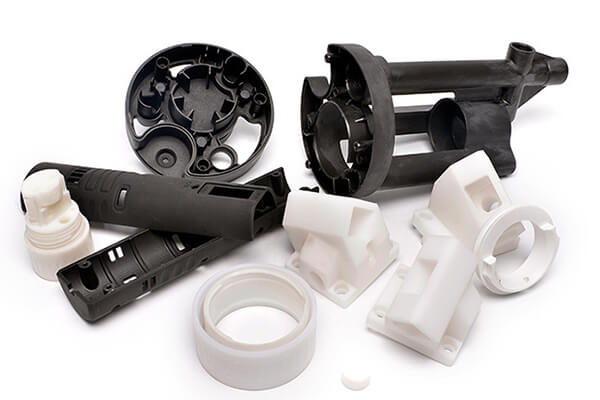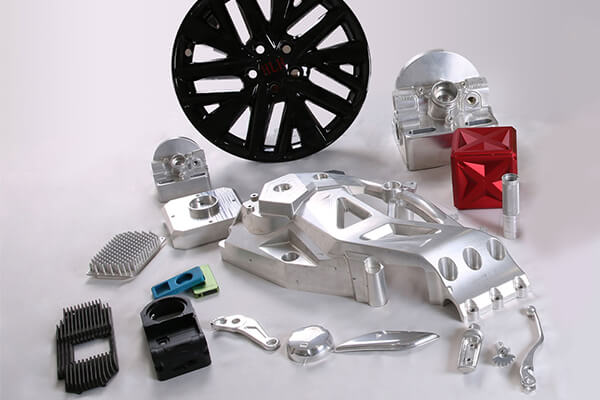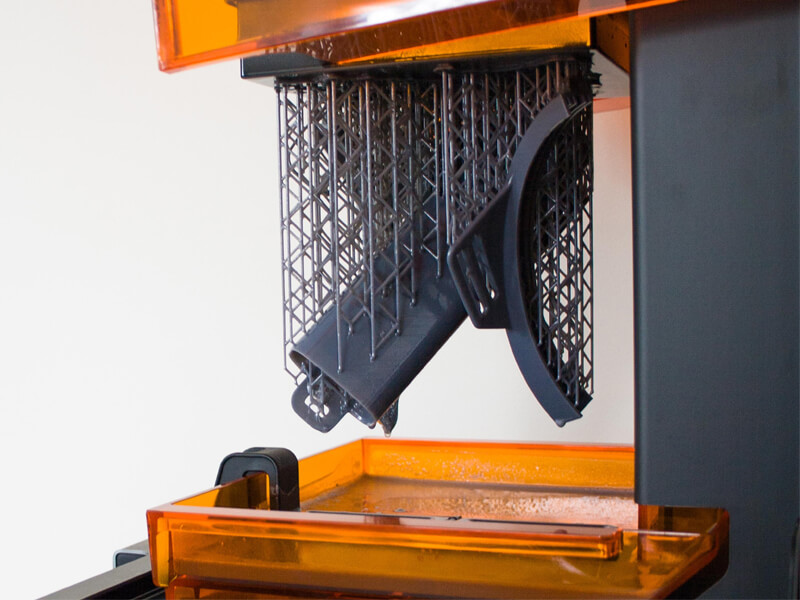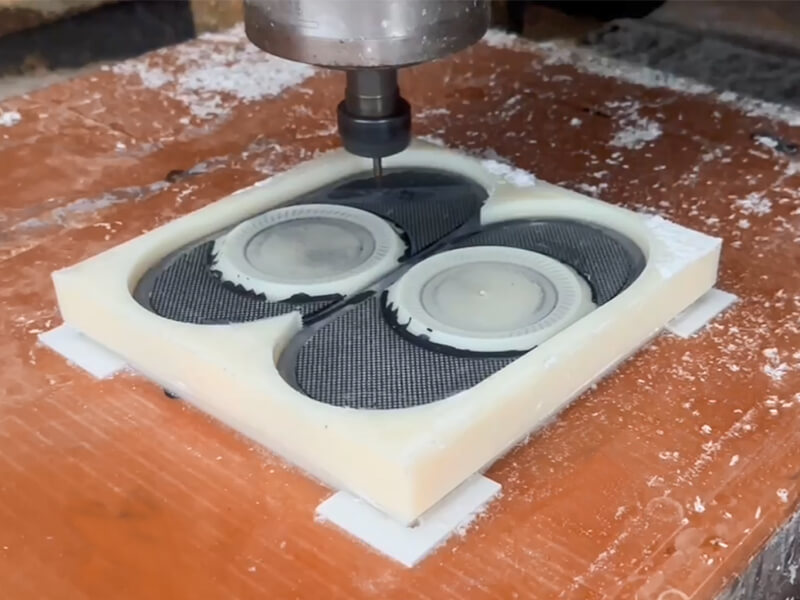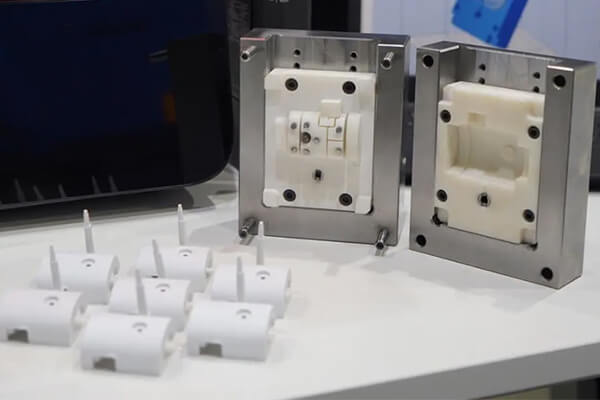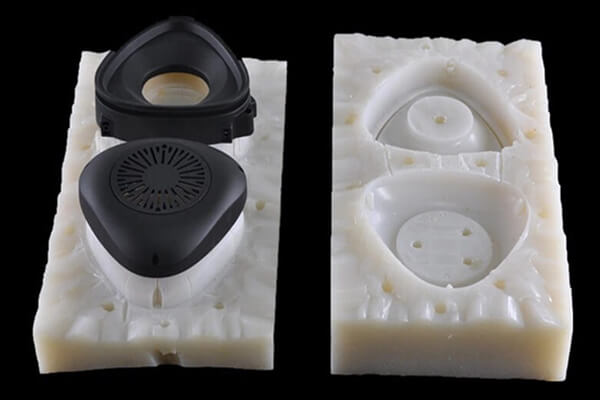Prototype Manufacturing: Prototyping Solutions To Different Purpose
Especially while you have a vital project to achieve, you can test your desired parts or products through prototype manufacturing. After successful validation, you can invest into ideal production.
Read best solutions for prototype manufacturing from Sungplastic, and welcome to consult with us.
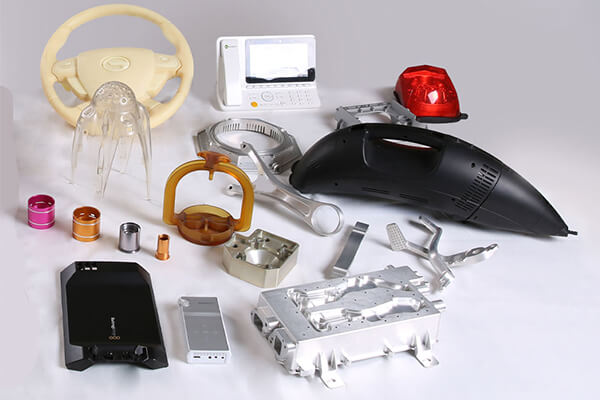
What is a Prototype?
A prototype is a preliminary model or representation of a product, system, or concept that is created to test and evaluate its design, functionality, and feasibility. It serves as a tangible and visual realization of an idea or concept before moving forward with full-scale production. Prototypes are used to gather feedback, identify design flaws, validate features, and make necessary adjustments before committing resources to mass production.
Prototypes can take various forms, including physical mock-ups, functional models, digital simulations, and virtual representations. The type of prototype chosen depends on the development stage, objectives, and the level of detail required to achieve the desired outcomes. Prototypes play a critical role in the product development life cycle by allowing designers and engineers to refine their concepts, enhance functionality, and ensure that the final product meets user needs and expectations.

Prototyping Attributes
Prototyping attributes refer to the characteristics and qualities that a prototype possesses. These attributes influence how well the prototype serves its intended purpose and how effectively it represents the final product.
Here are some key prototyping attributes:
- Functionality:
The extent to which the prototype mimics the actual functionality of the final product. Functional prototypes can perform tasks and exhibit key features. - Realism:
How closely the prototype resembles the final product in terms of appearance, materials, and behavior. - Fidelity:
The level of detail and accuracy in replicating the design, features, and interactions of the final product. - Scale:
The size and proportions of the prototype in relation to the actual product. - Material Representation:
The accuracy with which the prototype’s materials mimic those of the final product, including color, texture, and transparency. - Interactivity:
The extent to which the prototype allows user interactions and demonstrates the user experience. - Complexity:
How well the prototype captures the complexity of the final product’s design, including intricate details and components. - Iteration Ease:
The ease with which the prototype can be modified, updated, or refined to incorporate design changes and improvements. - Cost:
The financial resources required to create the prototype, including material costs, manufacturing expenses, and labor. - Time:
The duration needed to design, manufacture, and assemble the prototype. - Purpose Suitability:
How well the prototype aligns with its intended purpose, whether it’s for concept validation, usability testing, functional testing, or other goals. - Stakeholder Communication:
How effectively the prototype communicates design concepts and ideas to various stakeholders, including team members, investors, and end-users. - Usability:
How easily the prototype can be used and tested by stakeholders, including end-users, to gather feedback and insights. - Risk Reduction:
The extent to which the prototype helps identify potential design flaws, technical issues, or user challenges early in the development process. - Learnability:
How quickly users can understand and interact with the prototype to provide meaningful feedback. - Adaptability:
The ability to modify the prototype to accommodate changes in design, requirements, or functionality. - Performance Evaluation:
How well the prototype can be used to assess the performance, reliability, and durability of the final product.
The selection and emphasis of these attributes depend on the specific goals of prototyping, the stage of product development, and the intended audience for the prototype. An effective prototype carefully balances these attributes to achieve the desired outcomes and insights.
Types of Prototypes Manufacturing for Different Materials
Prototypes can be categorized into different types based on the materials used. Each type of prototype is suited for specific applications and requirements. Choosing the appropriate prototype type based on design specifications, material properties, and production goals is key to ensuring successful prototype manufacturing.
The various prototype types are categorized by material as followed.
Plastic Prototypes
Plastic prototypes encompass a range of techniques that utilize plastic materials for creating different types of physical models. Common plastic prototype methods include:
- 3D Printing Prototypes:
Utilizing various types of plastic materials through layer-by-layer deposition to rapidly manufacture physical models. - CNC Plastic Prototypes:
Employing computer numerical control (CNC) machines to carve plastic prototype machining components from solid blocks.
- Injection Molding Prototypes:
Employing short-run tooling to manufacture plastic parts for testing and validation.
Commonly Used Plastic Materials in Prototype Manufacturing
- ABS (Acrylonitrile Butadiene Styrene):
Known for its durability and impact resistance, ABS is commonly used in 3D printing and injection molding. It’s suitable for functional prototypes and parts requiring mechanical strength. - PLA (Polylactic Acid):
PLA is a biodegradable and easy-to-print plastic material commonly used in 3D printing. It’s ideal for visual prototypes, educational models, and concept validation. - PETG (Polyethylene Terephthalate Glycol):
PETG offers a good balance of strength, transparency, and ease of printing. It’s often used for functional prototypes, containers, and packaging. - Nylon:
Nylon is chosen for its high strength, flexibility, and resistance to wear. It’s suitable for functional prototype production, mechanical parts, and components production in automotive and aerospace industries. - Polypropylene:
With excellent chemical resistance and low density, polypropylene is used for prototype production of containers, automotive parts, and products that require good chemical compatibility. - PC (Polycarbonate):
PC is known for its high impact resistance and optical clarity. It’s used for prototype production requiring transparency, such as lenses, housings, and protective covers. - POM (Polyoxymethylene):
POM, also known as acetal or Delrin, is valued for its low friction, high stiffness, and dimensional stability. It’s suitable for creating precise and functional prototypes of gears, bearings, and sliding components. - Flexible TPU (Thermoplastic Polyurethane):
TPU is a rubber-like material with good flexibility and elasticity. It’s used to produce prototype tooling of gaskets, seals, footwear components, and ergonomic grips. - HDPE (High-Density Polyethylene):
HDPE is known for its chemical resistance and stiffness. It’s used for prototype production of containers, bottles, and industrial parts. - PS (Polystyrene):
PS offers clarity and ease of processing. It’s often used for creating prototype tooling of packaging, consumer goods, and medical devices.
Metal Prototypes
Metal prototypes involve the utilization of metal materials to fabricate physical models of various components.
Some common metal prototype methods include:
- Metal 3D Printing:
Creating physical models by utilizing metal powder through additive manufacturing, suitable for manufacturing complex metal parts. - CNC Machining:
Using computer-controlled machines to cut metal prototype machining parts from solid blocks.
Commonly used metal materials in Prototype Manufacturing
- Aluminum:
Aluminum is a widely used metal in prototype manufacturing due to its lightweight nature and excellent machinability. It’s suitable for creating prototypes of automotive components, aerospace parts, and consumer electronics. - Steel:
Steel is known for its strength and durability, making it suitable for creating machined prototypes or 3D printing prototypes of structural components, machinery parts, and tools. It can be machined or 3D printed depending on the desired outcome. - Stainless Steel:
Stainless steel offers corrosion resistance and is often used for prototypes of parts that require both strength and resistance to environmental factors. It’s commonly used in medical devices, kitchen appliances, and automotive components. - Titanium:
Titanium is valued for its high strength-to-weight ratio and resistance to heat and corrosion. It’s commonly used in aerospace, medical implants, and high-performance sports equipment prototypes. - Brass:
Brass is known for its aesthetic appeal and is often used for decorative prototype tooling, intricate parts, and components that require good conductivity, such as electrical connectors. - Copper:
Copper is favored for its excellent electrical conductivity and heat resistance. It’s used for prototypes of electrical components, heat exchangers, and plumbing fixtures. - Zinc:
Zinc is utilized for prototypes that require good casting properties. It’s commonly used in creating prototypes for die-casting applications. - Magnesium:
Magnesium’s lightweight properties make it suitable for prototypes in industries like aerospace, automotive, and electronics. It offers good strength-to-weight ratio and is also used in medical implants. - Nickel Alloys:
Nickel-based alloys provide high resistance to corrosion, heat, and wear. They are used for prototypes in extreme conditions, such as aerospace, petrochemical, and marine applications. - Tungsten:
Tungsten is known for its high density and strength, making it suitable for prototype tooling in industries that require components with exceptional durability and wear resistance.
Rubber/Elastomeric Prototypes
Rubber or elastomeric prototypes involve the creation of soft and flexible molds, often using silicone rubber, suitable for manufacturing intricate rubber or elastomeric components.
Commonly Used Rubber or Silicone Materials in Prototype Manufacturing
- Silicone Rubber:
Silicone rubber is a versatile elastomer known for its flexibility, heat resistance, and durability. It is often used in prototyping due to its ability to replicate intricate details and provide a soft touch. Silicone rubber can be cast into molds to create flexible parts for various applications, including medical devices, consumer products, and industrial components. - Liquid Silicone Rubber (LSR):
Liquid silicone rubber is a form of silicone rubber that can be injection molded. It allows for the production of complex and precise parts with excellent dimensional accuracy. LSR prototypes are commonly used in industries such as healthcare for medical device components, baby products, and kitchenware. - Polyurethane Rubber:
Polyurethane rubber offers a range of hardness levels and can mimic the properties of various materials, making it suitable for prototyping flexible parts with different levels of elasticity. It is often used to create prototypes of gaskets, seals, and cushioning components. - Latex:
Natural latex rubber is known for its stretchiness and flexibility. While less common in modern prototyping due to allergies and durability concerns, latex can still be used for specialized applications where its properties are advantageous. - Thermoplastic Elastomers (TPE):
TPEs are a class of materials that combine the characteristics of traditional rubber with the processing advantages of thermoplastics. They are versatile and can be easily molded using various techniques, making them suitable for creating flexible prototypes with different levels of softness. - Fluorosilicone Rubber:
Fluorosilicone rubber offers enhanced resistance to oils, fuels, and chemicals, making it suitable for prototypes intended for use in harsh environments or applications involving exposure to harsh substances. - EPDM (Ethylene Propylene Diene Monomer):
EPDM rubber is known for its excellent weather resistance, making it suitable for outdoor applications. It is used in prototyping parts like gaskets, seals, and automotive components. - Neoprene:
Neoprene is a synthetic rubber with good resistance to water, oils, and weathering. While less common in prototyping, it can still be used for creating prototypes of products requiring these specific properties.
Sheet Prototypes
Sheet prototypes entail the use of techniques such as cutting and folding of materials like paper or thin sheets to create simple prototypes.
Composite Prototypes
Composite prototypes involve layering different types of materials to create prototypes with specific performance attributes.
Liquid Prototypes
Liquid prototypes involve techniques such as using liquid silicone to create molds, suitable for manufacturing small batches of complex components.
Types of Prototypes Manufacturing for Different Purposes
Each type of prototype serves a distinct role in the product development process, addressing different needs and goals. Depending on the development stage and objectives, selecting the appropriate prototype type contributes to the smooth progression and successful implementation of projects.
Here are several types of prototype manufacturing according to purposes:
- Concept Prototypes:
Used to verify the feasibility and basic functionality of a product concept.
Often simplified models used to demonstrate design concepts and gather initial feedback. - Functional Prototypes:
Employed to validate the core functionality and performance of a product.
These prototypes possess actual working parts or functional elements to ensure the design meets expected requirements. - Appearance Prototypes:
Designed to validate the appearance, shape, and texture of a product.
Typically focused on visual details to achieve a more realistic visual representation. - Engineering Prototypes:
Utilized for engineering tests, reliability assessments, and performance evaluations.
Verify the product’s performance and durability under real-world usage conditions. - Pre-Production Prototypes:
Used to validate the product’s manufacturing processes and manufacturability.
Testing and optimization of materials, processes, and production engineering are conducted. - Integration Prototypes:
Employed to validate the integrated performance of various components within a product.
Often involve manufacturing multiple subsystems and conducting integration testing. - Display/Exhibition Prototypes:
Created to showcase product concepts, creativity, or design directions.
Primarily emphasize visual appeal and artistic presentation rather than actual functionality.
What is Rapid Prototyping?
Rapid prototyping is a technology-driven approach to quickly producing physical prototypes of a product, part, or system for the purpose of testing, validating, and iterating on design concepts. It is characterized by its speed, flexibility, and efficiency in creating tangible representations of ideas in a relatively short timeframe. Rapid prototyping techniques utilize various technologies and processes to transform digital designs into physical models, enabling designers, engineers, and stakeholders to visualize and assess the product’s form and function.
Common rapid prototyping techniques include 3D printing (additive manufacturing), CNC prototype machining, and laser cutting. These techniques allow designers to transform digital 3D models into physical prototypes with accuracy and speed.
Key features of rapid prototyping include:
- Speed:
Rapid prototyping techniques significantly reduce the time required to create prototypes compared to traditional manufacturing methods. This acceleration enables faster design iterations and shorter development cycles. - Iteration:
The quick turnaround time of rapid prototyping allows for frequent design iterations and modifications based on real-world testing and feedback, enhancing the product’s overall quality. - Customization:
Rapid prototyping allows for the creation of highly customized prototypes tailored to specific design requirements, enabling the exploration of various design alternatives. - Variety of Technologies:
Rapid prototyping encompasses a range of technologies, including 3D printing, CNC machining, laser cutting, and more, offering multiple options for different project needs. - Proof of Concept:
Rapid prototypes serve as proof of concept, helping to validate design assumptions and verify the feasibility of a product before committing to full-scale production. - Reduced Costs:
By identifying and addressing design flaws early in the development process, rapid prototyping helps prevent costly mistakes and rework during later stages of production. - User Feedback:
Rapid prototypes can be used to gather user feedback, enabling designers to make user-centric adjustments and improvements.
Pros of Rapid Prototyping
Rapid prototyping offers numerous advantages that contribute to more efficient, effective, and successful product development processes.
Here are some of the key pros of rapid prototyping:
- Accelerated Design Iterations:
Rapid prototyping allows for quick and frequent design iterations, enabling designers and engineers to test various concepts and make improvements rapidly. - Reduced Time to Market:
The speed of creating prototypes using rapid prototyping techniques significantly shortens the time required to move from concept to a finalized product, enabling quicker product launches. - Early Detection of Design Flaws:
Rapid prototyping helps identify design flaws, technical issues, and potential improvements early in the development process, minimizing costly errors during later stages of production. - User-Centric Design:
By creating physical prototypes, designers can gather user feedback and insights, ensuring that the final product aligns with user needs and preferences. - Cost Savings:
Catching and addressing design issues during the prototyping phase is more cost-effective than making changes after mass production has begun. - Customization and Flexibility:
Rapid prototyping techniques allow for the creation of highly customized prototypes, enabling the exploration of different design alternatives and solutions. - Complex Geometries:
Rapid prototyping is capable of producing intricate and complex geometries that may be challenging or impossible to achieve using traditional manufacturing methods. - Communication and Visualization:
Physical prototypes are effective communication tools for conveying design ideas and concepts to stakeholders, team members, and investors. - Risk Mitigation:
Rapid prototyping helps mitigate risks by allowing designers to test and validate assumptions and designs before committing to costly production processes. - Proof of Concept:
Prototypes serve as tangible proof of concept, demonstrating the feasibility and functionality of a design idea to stakeholders and investors. - Multi-Material and Multi-Component Prototyping:
Certain rapid prototyping technologies enable the creation of prototypes with multiple materials or components in a single build, enhancing realism and functionality. - Feedback-Driven Improvement:
The iterative nature of rapid prototyping ensures that each prototype iteration is built upon lessons learned from previous versions, leading to continuous improvement. - Enhanced Collaboration:
Physical prototypes facilitate collaboration among cross-functional teams by providing a tangible representation of the design that can be evaluated, discussed, and refined collectively. - Visualization of Design Concepts:
Rapid prototypes enable designers and stakeholders to visualize design concepts in a tangible form, aiding in decision-making and design validation.
Prototype Manufacturing Techniques and Methods
These prototype manufacturing techniques offer a range of options to match specific project requirements, from rapid concept validation to functional and appearance testing. The choice of technique depends on factors like material, complexity, timeline, and the desired level of fidelity.
Additive Manufacturing (3D Printing)
Additive manufacturing, commonly known as 3D printing, involves creating three-dimensional objects by adding successive layers of material. A digital 3D model is sliced into layers, and the printer deposits material layer by layer, solidifying each layer as it builds upwards.
3D printing offers versatility and speed in prototype production directly from digital designs to model. 3D printing is used for creating prototypes with intricate geometries, rapid iterations, and even functional parts in various industries, including aerospace, healthcare, and consumer goods.
CNC Machining
Computer Numerical Control (CNC) machining involves using computer-controlled machines to precisely cut and shape materials. A digital design is translated into machine-readable code that guides the CNC machine in cutting, milling, drilling, or turning materials to create the machined prototypes.
CNC machining is suitable for producing machined prototypes from a wide range of materials, including metals, plastics, and wood. It is favored for its accuracy and ability to create high-quality parts.
Injection Molding Prototypes
Injection molding is a manufacturing process where molten material is injected into a mold cavity to create a solidified part. Injection molding prototypes are created using short-run tools. A prototype mold is created, and molten plastic is injected into the mold cavity. Once cooled and solidified, the prototype is ejected from the mold.
Injection molding prototypes offer insights into material behavior, part quality, and potential design improvements before committing to full-scale production.
Laser Cutting and Engraving
Laser cutting and engraving use high-powered lasers to cut or engrave materials with precision. A digital design is converted into vector files, which guide the laser in cutting or engraving the material. Laser cutting creates 2D shapes, while engraving adds detailed patterns.
Laser cutting and engraving are used to create prototypes from materials like wood, acrylic, fabric, and leather. They are often used for intricate designs and detailed components.
Vacuum Forming
Vacuum forming involves heating a plastic sheet until it becomes pliable, then forming it over a mold using a vacuum to create the desired shape by vacuum pressure.
Vacuum forming is used to create prototypes for products with curved or shallow shapes, such as packaging, automotive interior components, and consumer goods.
Soft Tooling and Silicone Molds
Soft tooling involves creating molds using materials like silicone rubber to produce limited-run prototypes or small batches of parts. A master pattern or prototype is used to create a mold, often made from silicone rubber. Molten material is poured into the mold to create the desired prototype.
Soft tooling and silicone molds are particularly useful for producing prototypes with complex geometries, delicate features, and flexible materials.
Steps in Prototype Manufacturing Process
- Conceptualization and Design:
Understanding Requirements:
Begin by understanding the product requirements, objectives, and target audience about prototype manufacturing at the prototype process. Gather information about the desired functionality, aesthetics, and user experience of prototype manufacturing.Ideation:
Generate ideas and concepts that fulfill the requirements of prototype manufacturing. Brainstorm various design possibilities at this prototype process and explore creative solutions for prototype manufacturing.Sketching and Rendering:
Translate concepts into visual representations of prototype manufacturing through sketches, drawings, and digital renderings. These visualizations of prototype manufacturing help communicate design intentions. - Selection of Prototype Manufacturing Method:
Choosing the Right Technique:
Evaluate different prototype manufacturing techniques such as 3D printing, CNC machining, or molding, based on factors like complexity, material compatibility, and desired fidelity.Fit for Prototype Manufacturing Purpose:
Select a method that aligns with the purpose of the prototype manufacturing, whether it’s for functional testing, appearance validation, or user feedback. - Material Selection:
Material Properties:
Choose materials that match the intended characteristics of the final product of prototype manufacturing, considering factors like mechanical properties, heat resistance, and surface finish at the prototype process.Material Compatibility:
Ensure the selected material is suitable for the chosen prototype manufacturing method and prototype manufacturing equipment. - Manufacturing the Prototype:
Digital Modeling:
Develop a detailed 3D digital model of the prototype manufacturing using computer-aided design (CAD) software. This model serves as the basis for prototype manufacturing.Prototype Manufacturing Equipment:
Use appropriate machinery and equipment for the selected prototype manufacturing method. For example, at prototype process, 3D printers for additive manufacturing or CNC machines for prototype machining. - Testing, Validation, and Feedback of Prototype Manufacturing:
Functional Testing:
Test the prototype’s functionality and performance against the intended objectives. At prototype process, identify any design flaws, technical issues, or deviations from requirements of prototype manufacturing.User Testing:
Involve potential users in testing the prototype. Gather feedback on usability, user experience, and any improvements needed.Validation:
Verify that the prototype meets design and functional requirements. Ensure it aligns with the initial conceptualization. - Iterative Refinement:
Feedback Incorporation:
Analyze feedback from testing and validation. Identify areas for improvement and implement necessary changes to the prototype design.Further Iterations:
If significant changes are required, repeat the prototyping process with updated designs. Continue testing and refinement until the prototype meets the desired criteria.
Throughout these steps, collaboration between designers, engineers, and stakeholders is essential. Effective communication ensures that the prototype manufacturing accurately reflects the intended design and function. The iterative nature of the process allows for continuous improvement, resulting in a prototype that not only fulfills its intended purpose but also serves as a foundation for the final product’s development.
Industries and Applications of Prototypes
- Product Design and Consumer Goods:
In the realm of product design, prototype manufacturing plays a pivotal role in bringing concepts to life and refining designs before mass production.Prototypes are used to create physical representations of consumer goods, such as household appliances, furniture, kitchenware, and fashion accessories. They allow designers to test ergonomics, aesthetics, and functionality, ensuring that the final product of prototype manufacturing meets user expectations.
- Automotive and Aerospace:
The automotive and aerospace industries heavily rely on prototypes for developing vehicles, aircraft, and their components.Prototypes are used to test and validate new vehicle designs, assess aerodynamics, optimize engine components, and ensure safety systems. In aerospace, prototype manufacturing aids in developing lightweight structures, testing flight dynamics, and evaluating new materials for space exploration.
- Medical Device Development:
The medical field benefits significantly from prototype manufacturing, ensuring the safety, efficacy, and usability of medical devices.Prototypes are used to create functional models of medical devices, such as surgical instruments, prosthetics, implantable devices, and diagnostic tools. These prototypes allow for hands-on testing, ergonomic evaluations, and user feedback to refine designs before regulatory approval.
- Electronics and Technology:
The fast-paced electronics and technology sectors rely on prototype manufacturing to drive innovation and rapid product development.Prototypes help create early versions of electronic gadgets, smartphones, wearables, and other tech products. Prototype manufacturing facilitates testing of circuitry, user interfaces, and connectivity features, enabling companies to fine-tune designs based on usability and performance feedback.
- Architecture and Construction:
Architects and construction professionals utilize prototype manufacturing to visualize and test architectural designs and building elements.Architectural prototypes aid in creating scale models of buildings and structures. The prototype manufacturing allows architects to explore spatial relationships, test lighting effects, and analyze building performance. In construction, prototype manufacturing can help test new construction materials, modular building components, and innovative construction techniques.
Prototype manufacturing plays a crucial role in innovation across a wide range of industries, allowing businesses to accelerate development, reduce risks, and gather crucial insights from testing and user feedback. As technology continues to advance, the applications of prototype manufacturing are expanding into new areas, enabling industries to create more sophisticated, efficient, and user-centric solutions.
About Sungplastic
Sungplastic is a plastic product manufacturer with rich experience in injection molding. According to the different product development requirements, we flexibly adjust the manufacturing process to achieve high quality, high efficiency and more economical.
We offer a variety of manufacturing services: Rapid Prototyping, Tool Making, Injection Molding, Product Design and Development, CNC Machining and Metal Stamping. You can choose from a variety of plastics, silicone rubber, or metal for your product. Regardless of mass production or small batch customization, Sungplastic has always been committed to providing assured, efficient and more economical one-stop processing services for your projects.
Contact us for a free quote and project review.
Get a free quote and design analysis today.
We’ll reply you within 6 working hours.
We respect your privacy.
+86 139 2927 4777 (WhatsApp, Wechat)

